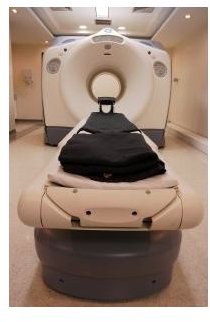Discussion of a Ruptured Abdominal Aortic Aneurysm Including Risk Factors, Prognosis, and Recovery from this Life-Threatening Condition
What Is an Aortic Aneurysm?
An aortic aneurysm is simply an abnormal enlargement of the aorta which is one of the primary arteries of the circulatory system. While the exact cause is not known, genetics and some lifestyle behaviors may play a role in the development of this condition. Tobacco use and high blood pressure are major risk factors.
Often, there are not recognizable symptoms. Your doctor may discover this condition if you have a CT scan or angiogram procedure. Sometimes, the aneurysm will develop slowly over the course of your life. Other times, it may grow quickly, increasing the risk of a rupture.
If your doctor detects an aortic aneurysm, he may recommend surgery to replace the bad section of the blood vessel with a synthetic material such as Dacron. A size of 5.5 centimeters is the typical decision point between monitoring and surgery.
How a Rupture Occurs
While its development may happen slowly over time, a ruptured abdominal aortic aneurysm may occur suddenly. The symptoms are unmistakable. You will feel an intense, radiating pain in your abdomen and nausea. You may also experience these symptoms if an aortic dissection happens. In this case, blood leaks within the walls of the aorta. Its presence may be confirmed through a chest x-ray or other type of imagery such as an MRI.
Treatment Options
If you have a ruptured abdominal aortic aneurysm, treatment must repair the site as quickly as possible. Because of its importance for cardiovascular function, the rupture must be repaired as soon as possible through surgery. Unfortunately, due to its serious nature, less than 40 percent of the individuals who make it the operating room will survive.
Surgery involves repairing the damaged blood vessel. This can be done through open abdominal surgery. For the surgeon, this procedure gives full access to the site. However, recovery is painful and long. You will likely be hospitalized for several days, beginning with one to two days in intensive care. Another less-invasive treatment option exists called an endovascular stent grafting. However, if a rupture has occurred, this procedure is not appropriate.
Recovery
Following your surgery, you will likely stay on pain medication and antibiotics for a short period of time. You will also have activity restrictions for several weeks. Your doctor will also recommend lifestyle changes to keep your cardiovascular system healthy such as controlling your weight and quitting smoking. He may also suggest modifications to your diet to lower your risk of atherosclerosis and high cholesterol.
An abdominal aortic aneurysm is a serious health condition, requiring prompt treatment and lifestyle changes. Your risk increases with age. In order to prevent this cardiovascular issue, a healthy lifestyle including a good diet and regular exercise will help control the conditions which can elevate your risk.
Photo by Johany López, stock.xchng
References
Mayo Clinic: Abdominal Aortic Aneurysm
L. Sherwood. Human Physiology: From Cells to Systems. 2008.
WebMD: Angiogram
